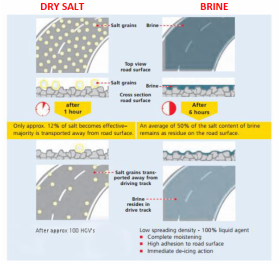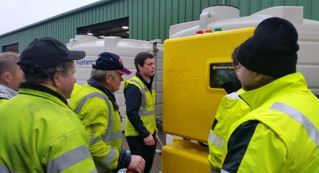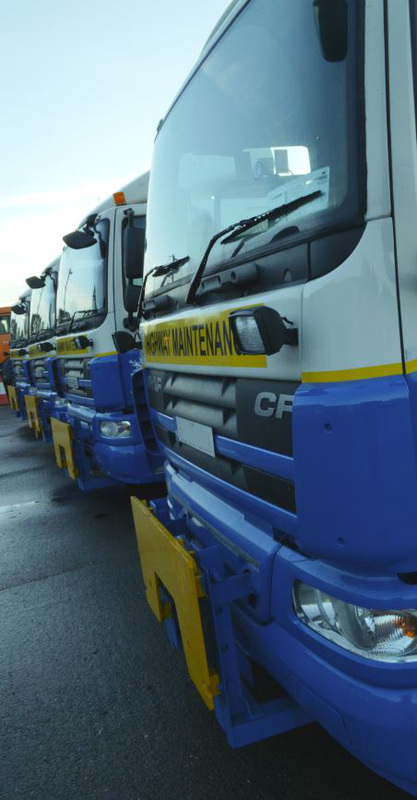Brine |
Further Info: |
|
Standard brine is a simple mixture of water and NaCL salt. A pure or eutectic NaCl salt brine is 23.3% salt concentration by weight. A eutectic salt brine is capable of being applied at temperatures as low as -21°C without freezing. For lower temperatures other salt such as Calcium Chloride CaCl capable of temperatures as low as -51°C can also be used. To make brine, a Brine Saturator is required that is capable of producing brine at this correct concentration in a reliable way.
Why Use Salt Brine?
How Does Brine Compare To Dry Salt?
|
If you are interested in learning more about brine and how it can help you improve your winter maintenance service please contact WinterTech Systems.
We can also organise demo & training days. |







